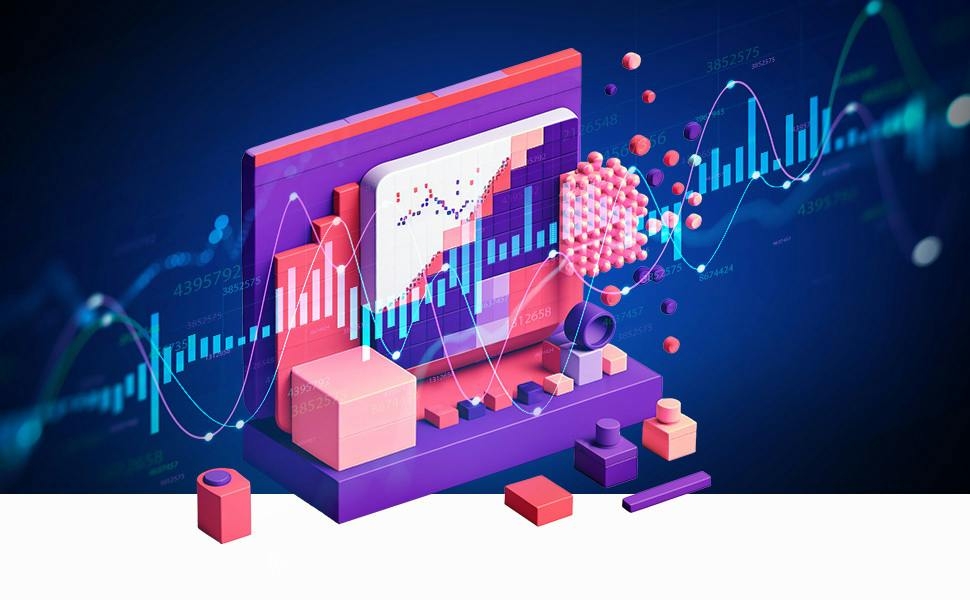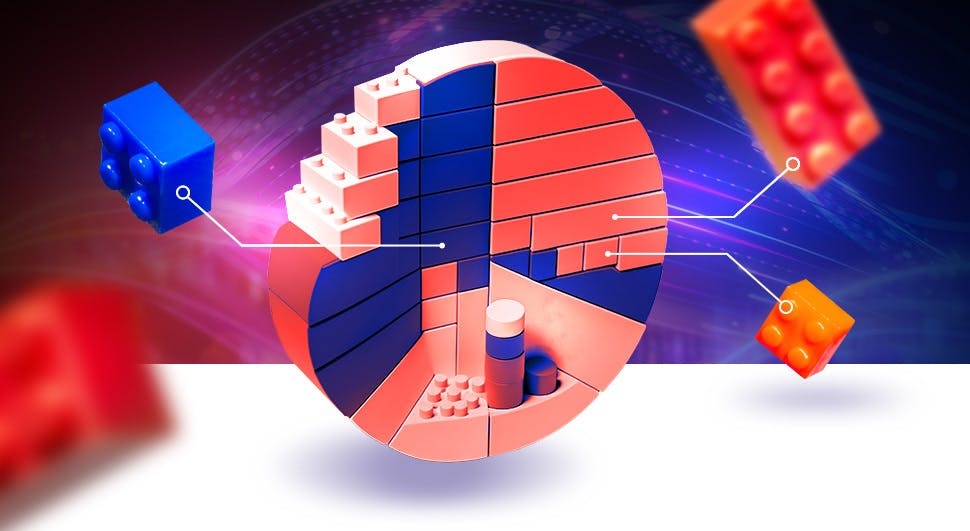Similarities in Building and Problem Solving

January 28 is World LEGO Day. These blocks are loved by everyone - both children and adults. A separate world has been created around LEGO, which brings together museums, theme parks, computer games, clothes, gadgets and even TV shows. Today, LEGO is still the largest toy manufacturer and one of the most loved brands in the world. The queues to the shops of this giant can stretch for several dozen meters.
Since the beginning of the 1930s, LEGO has been producing toys providing amazing experiences for both children and many adults, crossing social and cultural divisions at the same time. It is worth mentioning that, apart from having fun, they also have educational values: they stimulate creativity and encourage creativity. I don't know if you know, but the classic eight-spline bricks can be combined with each other in at least 24 possible combinations.
Using LEGO day, we will want to talk about the similarities between LEGO bricks and data analysis, which is present in every aspect: both in technology and in business.
LEGO and data analytics, or data analytics and LEGO?
Probably many of you may be surprised that we combine data analysis with World LEGO Day? The answer is simple: these two seemingly different issues have a lot in common, and data analysis is one of the inherent elements of the IT world.
LEGO bricks and data analysis have more in common than they divide - and you will read about it later.
It is worth mentioning that LEGO is more and more often used as a tool to support the acquisition of data visualization skills or practicing analytical skills, e.g. learning the concepts of data processing, visualization and modeling.
Data analysis can definitely be compared to building with LEGO blocks. Both processes mainly consist in combining individual parts in such a way as to create a single whole. The only difference is the elements from which we build, because in data analysis, the components are data, which are ultimately transformed into information and conclusions. In contrast, in building with LEGO bricks, the elements are plastic bricks that ultimately create unusual buildings and structures.

LEGO and data analysis – similarities
The common elements are the goal and the action plan - in both cases, the intended effect will not be achieved if any of them is missing. In both LEGO stacking and data analysis, improper connection of the elements can lead to incorrect results. In the case of LEGO bricks, we will build a structure that will not be a whole, while in the case of data analysis, we will get incorrect results that will lead to wrong conclusions.
Another similarity is the fact that both processes rely on assembling and connecting different elements. In data analysis, information collected from various sources should be combined, processed and analyzed to obtain results and conclusions, similarly to building with LEGO bricks - the elements are bricks that, when properly combined, create interesting buildings.
Both processes require a lot of patience, precision and focus. Assembling sets of blocks and creating structures is a demanding and often long-lasting process. It is similar in the case of data analysis - in order to properly combine all the elements and avoid errors in the final conclusions, you often have to be patient and precise.
Speaking of similarities, it is impossible to forget about the complexity and intricacy in both cases. Buildings made of LEGO bricks can often resemble a large amount of diverse data with a degree of difficulty that must be properly analyzed in order to achieve the intended end result.
Iterativity is another common feature that can be noticed when looking for similarities. Buildings made of LEGO bricks can be created and modified countless times, assembled and disassembled, combined sets and still building something new. The same possibility is given to us by data analysis. The collected information, just like building blocks, can be processed, modified and analyzed many times, so that each time you get a different perspective and improve the final result.
The last similarity I want to mention is usability. Both building with LEGO bricks and data analysis have in common the fact that we can achieve the effect of usability every time - assembling LEGO allows you to familiarize yourself with the basic principles of mathematics, physics or even mechanics, and it can also arouse passion. However, in the case of data analysis, the conclusions and information resulting from data processing support business decision making and problem solving in many situations.
And finally ... for us, LEGO isn’t only toys
One thing is certain: LEGO is part of our culture and it's extremely important to start recognizing that in addition to entertainment, it also has an educational role, consisting in developing analytical skills that are so important in both business and the IT world. LEGO develops skills such as planning, designing and problem solving. It also stimulates creativity and the ability to search for unconventional solutions.
That is why it is worth mentioning on the occasion of World LEGO Day how colorful bricks affect our development.
There is no doubt that LEGO is one of the most popular toys. It is estimated that approximately 100 million people buy or receive a set of bricks each year - to show the scale, you can imagine that every third inhabitant of the United States buys one set a year.
When buying one of the sets, let's remember about the benefits of boxes full of these unusual blocks. Also... Leg Godt - have fun.
Sign up to Our Insights Newsletter
We will send you an e-mail whenever we upload new article. Be the first one to get the news about latest design and tech trends.
I agree to receive marketing and/or commercial information from Qodeca Sp. z o.o. with registered seat in Warsaw via electronic means to the E-mail address indicated by me. I acknowledge that my consent may be withdrawn at any time. I confirm that I have read Privacy Policy.
Detailed information regarding the scope, manners, purposes, and legal grounds for the processing of your personal data as well as rights to which the data subjects are entitled are provided in the Privacy Policy of our website. We encourage you to familiarise yourself with these contents.
You can unsubscribe from our newsletter at any time.
We respect your privacy. Your e-mail address will only be used to send our newsletter.
